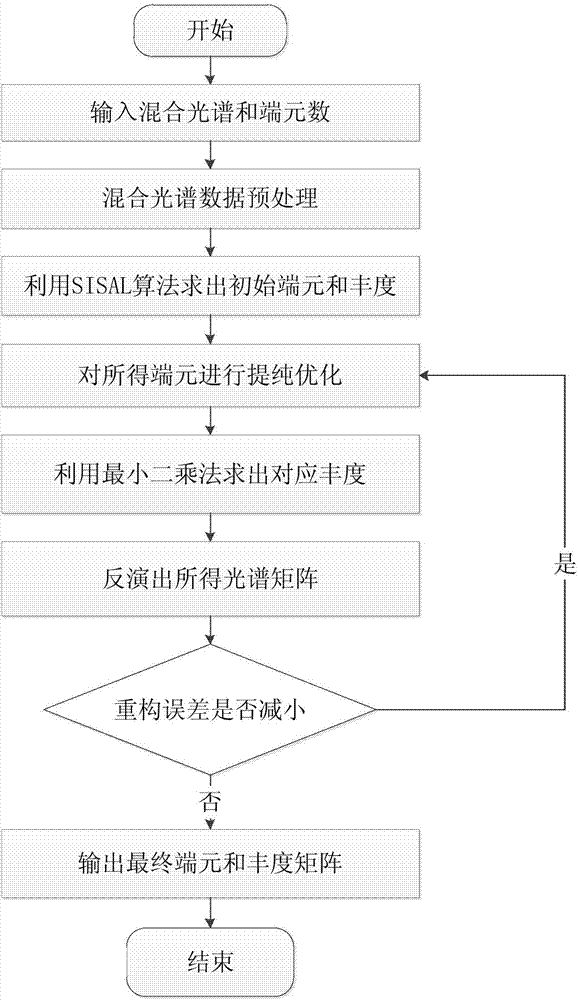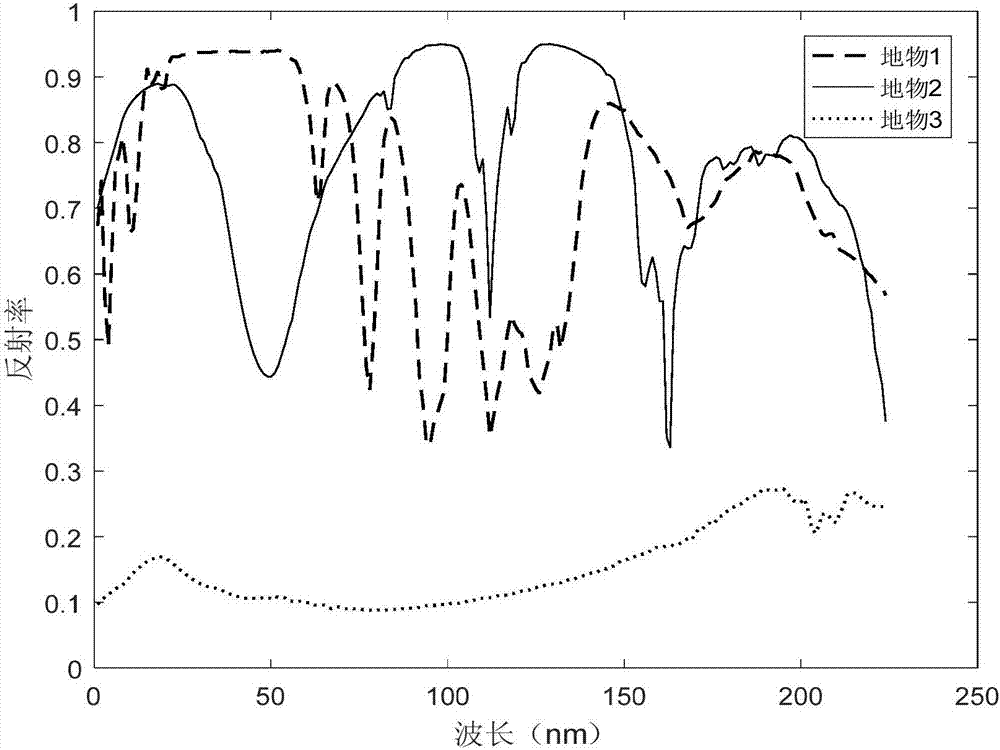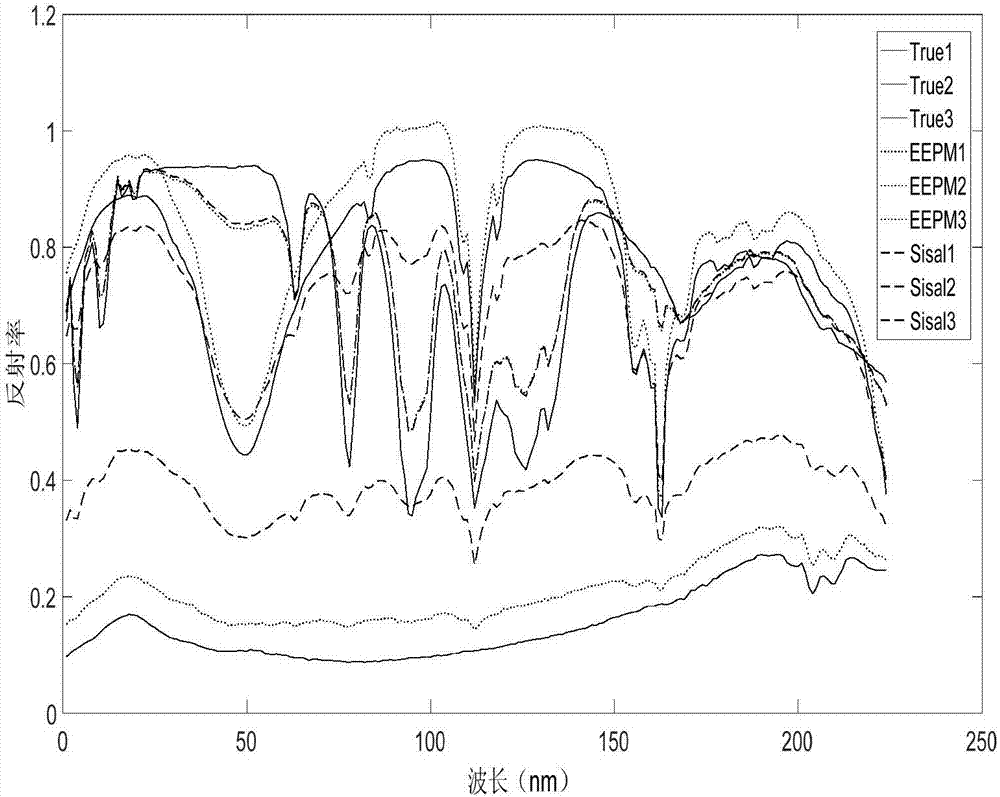Purification and optimization-based space target spectrum de-mixing method
A space target, spectral unmixing technology, applied in image data processing, instruments, calculations, etc., can solve the problems of great influence on the results, less observation data, low efficiency, etc., to ensure the validity and accuracy of data, guarantee Runtime and error control, the effect of increasing the capacity of the data
- Summary
- Abstract
- Description
- Claims
- Application Information
AI Technical Summary
Problems solved by technology
Method used
Image
Examples
Embodiment Construction
[0057] In order to make the object, technical solution and advantages of the present invention clearer, the present invention will be further described in detail by citing the following embodiments and referring to the accompanying drawings.
[0058] A method for unmixing a spatial target spectrum based on purification and optimization in the present invention, firstly extracts endmembers by adopting the simplex method to the original sparse spectrum, determines the initial endmembers, and reduces the amount of calculation; then performs endmember purification optimization, the purification method Data expansion can be performed while ensuring data validity and accuracy, and the initial endmembers can be further approximated to the real result; finally, the endmembers and abundance obtained after purification and optimization are compared with the original spectrum until the purified endmembers are heavy. The structural error is smaller than the minimum value of the previous er...
PUM
 Login to View More
Login to View More Abstract
Description
Claims
Application Information
 Login to View More
Login to View More - R&D
- Intellectual Property
- Life Sciences
- Materials
- Tech Scout
- Unparalleled Data Quality
- Higher Quality Content
- 60% Fewer Hallucinations
Browse by: Latest US Patents, China's latest patents, Technical Efficacy Thesaurus, Application Domain, Technology Topic, Popular Technical Reports.
© 2025 PatSnap. All rights reserved.Legal|Privacy policy|Modern Slavery Act Transparency Statement|Sitemap|About US| Contact US: help@patsnap.com



